SCADA là gì? Giải đáp tất cả về hệ thống điều khiển giám sát SCADA
SCADA (Supervisory Control and Data Acquisition) is a system of software and hardware elements that allows organizations to control and monitor industrial processes by directly interfacing with plant-floor machinery and viewing real-time data.
Using a SCADA system, industrial organizations can:
- Control industrial processes and critical infrastructure locally or at remote locations
- Monitor, gather, and process real-time data
- Directly interact with devices such as sensors, valves, pumps, motors, and more through human-machine interface (HMI) software
- Record events into a log file
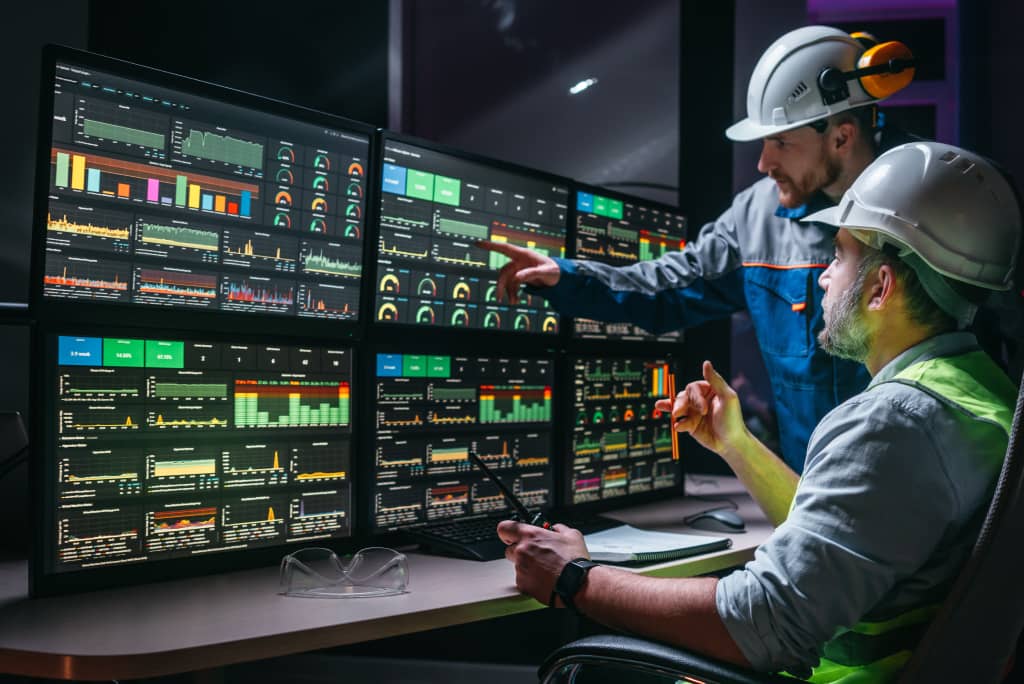
Where SCADA Systems Are Used
SCADA systems are critical for maintaining efficiency, processing data, and reducing downtime in a wide variety of industrial organizations. Some of the main industries that implement SCADA systems include:
Oil and Gas Industries
SCADA systems are often used in the oil and gas industry to facilitate remote control and monitoring of pipelines, pumps, refineries, offshore platforms, and other areas that are typically located in remote locations where human monitoring or operation would be highly inefficient.
Furthermore, the efficient, real-time remote monitoring capabilities of SCADA systems greatly help distribute pertinent data throughout an operation, which allows for more informed decisions to be made regarding valuable resources.
Transportation Industries
SCADA systems are also widely implemented in the transportation industry. For example, SCADA systems provide the remote monitoring and control capabilities necessary to regulate traffic lights in a way that facilitates a smooth and continuous flow of traffic. In the same vein, these systems can help identify any malfunctions or out-of-order signals from stoplights so that the issue can be rectified immediately before significant traffic jams or accidents occur as a result of a faulty stoplight.
In addition to intersection monitoring, SCADA systems are also implemented in mass transit applications. The real-time remote control and monitoring capabilities of these systems make them highly beneficial for keeping track of and locating trains, busses, and other forms of public transportation. When public transportation journeys to remote locations, SCADA systems are helpful for regulating electricity.
Water and Wastewater Management
Supervisory control and data acquisition systems are also heavily implemented in water and wastewater management applications. These systems help facilitate the regulation of water flow, pipe pressure, water distribution, and reservoir levels. In addition, they also help monitor wastewater collection facilities and water treatment centers in remote locations.
Energy Management
SCADA systems are implemented in a variety of energy management industries—from nuclear energy plants to gas-fired power plants—to help facilitate the generation, transmission, and distribution of electricity.
For example, SCADA systems can help remotely monitor breaker operations or control which power grids in operation. In addition, the RTUs or PLCs and HMI systems used by SCADA systems are often used by electric utilities to remotely detect the flow and line voltage of certain sites.
Manufacturing Industries
SCADA systems provide numerous benefits for manufacturing industries. The remote monitoring capabilities of SCADA systems help manufacturing industries keep a close eye on their processes in areas that would be dangerous for humans to traverse. These real-time monitoring and control capabilities are also highly advantageous for manufacturing industries that implement automated industrial processes.
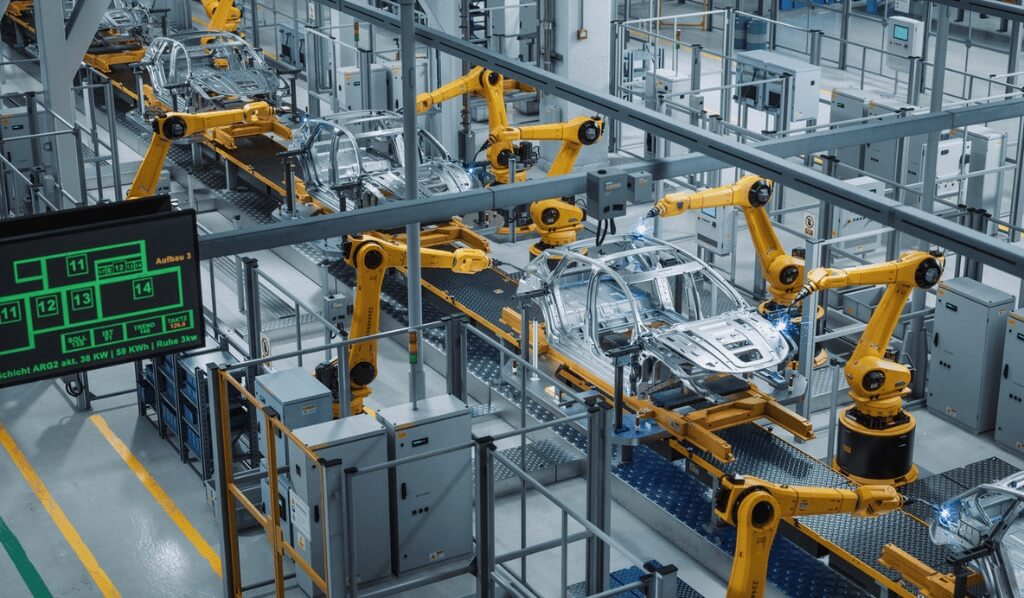
5 main components of a SCADA system
Supervisory computers
This is the core of the SCADA system, gathering data on the process and sending control commands to the field connected devices.
It refers to the computer and software responsible for communicating with the field connection controllers, which are RTUs and PLCs, and includes the HMI software running on operator workstations.
In smaller SCADA systems, the supervisory computer may be composed of a single PC, in which case the HMI is a part of this computer. In larger SCADA systems, the master station may include several HMIs hosted on client computers, multiple servers for data acquisition, distributed software applications, and disaster recovery sites.
To increase the integrity of the system the multiple servers will often be configured in a dual-redundant or hot-standby formation providing continuous control and monitoring in the event of a server malfunction or breakdown.
Remote terminal units (RTU)
RTUs connect to sensors and actuators in the process and are networked to the supervisory computer system. RTUs have embedded control capabilities and often conform to the IEC 61131-3 standard for programming and support automation via ladder logic, a function block diagram or a variety of other languages.
Remote locations often have little or no local infrastructure, so it is not uncommon to find RTUs running off a small solar power system, using radio, GSM or satellite for communications, and being ruggedized to survive from -20C to +70C or even -40C to +85C without external heating or cooling equipment.
Programmable logic controllers (PLC)
PLCs are connected to sensors and actuators in the process, and are networked to the supervisory system. In factory automation, PLCs typically have a high speed connection to the SCADA system. In remote applications, such as a large water treatment plant, PLCs may connect directly to SCADA over a wireless link, or more commonly, utilise an RTU for the communications management.
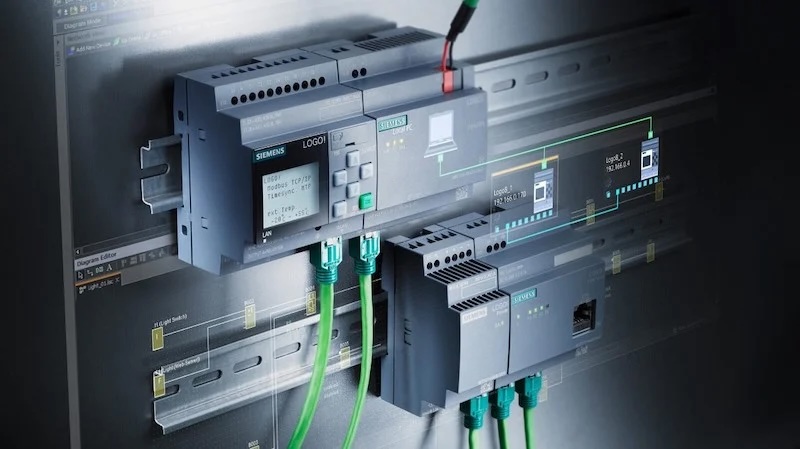
Communication infrastructure
This connects the supervisory computer system to the RTUs and PLCs, and may use industry standard or manufacturer proprietary protocols.
Both RTUs and PLCs operate autonomously on the near-real time control of the process, using the last command given from the supervisory system. Failure of the communications network does not necessarily stop the plant process controls, and on resumption of communications, the operator can continue with monitoring and control. Some critical systems will have dual redundant data highways, often cabled via diverse routes.
Human-Machine Interface (HMI)
The HMI is the operator window of the supervisory system. It presents plant information to the operating personnel graphically in the form of mimic diagrams, which are a schematic representation of the plant being controlled, and alarm and event logging pages. Mimic diagrams consist of line graphics and schematic symbols to represent process elements or may consist of digital photographs of the process equipment overlain with animated symbols. Supervisory operation of the plant is by means of the HMI, with operators issuing commands using mouse pointers, keyboards and touch screens.
For example, a symbol of a pump can show the operator that the pump is running, and a flow meter symbol can show how much fluid it is pumping through the pipe. The operator can switch the pump off from the mimic by a mouse click or screen touch.
How does a SCADA system work?
SCADA systems obtain and collect data from sensors and network devices attached to PLCs or RTUs before converting it into a central control room where it can be analyzed and displayed on HMI into information that humans can understand.
The control room operator can then use this information to make decisions and control the remote equipment.
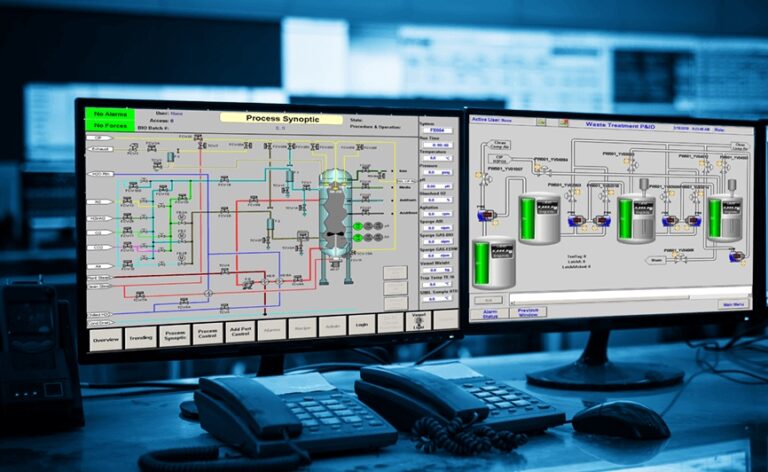
SCADA systems are designed to be flexible and can be configured to control a wide variety of industrial processes, monitoring and controlling various parameters like temperature, flow, pressure, humidity, voltage, and current.
Origin of SCADA
The Birth of SCADA
To understand the origins of SCADA, we must understand the problems industrial organizations are trying to solve. Before the concept of SCADA was introduced in the mid-20th century, many manufacturing floors, industrial plants, and remote sites relied on personnel to manually control and monitor equipment via push buttons and analog dials.
As industrial floors and remote sites began to scale out in size, solutions were needed to control equipment over long distances. Industrial organizations started to utilize relays and timers to provide some level of supervisory control without having to send people to remote locations to interact with each device.
While relays and timers solved many problems by providing limited automation functionality, more issues began to arise as organizations continued to scale out. Relays and timers were difficult to reconfigure and fault-find, and the control panels took up racks upon racks of space. A more efficient and fully automated system of control and monitoring was needed.
In the early 1950s, computers were first developed and used for industrial control purposes. Supervisory control began to become popular among the major utilities, oil and gas pipelines, and other industrial markets at that time. In the 1960s, telemetry was established for monitoring, which allowed for automated communications to transmit measurements and other data from remotes sites to monitoring equipment.
The term “SCADA” was coined in the early 1970s, and the rise of microprocessors and PLCs during that decade increased enterprises’ ability to monitor and control automated processes more than ever before.
The Evolution of Modern SCADA Systems
The first iteration of SCADA started off with mainframe computers. Networks as we know them today were not available, and each SCADA system stood on its own. These systems were what would now be referred to as monolithic SCADA systems.
Modern SCADA systems allow real-time data from the plant floor to be accessed from anywhere in the world. This access to real-time information allows governments, businesses, and individuals to make data-driven decisions about how to improve their processes.

Also, most modern SCADA designer applications have rapid application development (RAD) capabilities that allow users to design applications relatively easily, even if they don't have extensive knowledge of software development.
SCADA software that utilizes the power of SQL databases provides huge advantages over antiquated SCADA software. One big advantage of using SQL databases with a SCADA system is that it makes it easier to integrate into existing MES system and ERP , allowing data to flow seamlessly through an entire organization.
Examples of SCADA Systems and SCADA System Applications
Oil and Gas
Oil and gas companies use SCADA systems for industrial process automation. A SCADA system can provide these companies with insights into tank levels, temperature, pressure and flow — without having to send technicians to oil and gas sites to get these measurements. Besides, the system provides oil and gas companies with a steady flow of data and insights that they can quickly and easily access as needed.
In addition, oil and gas companies can utilize SCADA to prevent emergencies. For example, a sensor can show that the pressure in a well has reached an unsafe level. At this point, an alert can automatically be sent out to shut off the system. This helps keep people safe and avoids costly downtime.
Smart Cities
Smart cities can leverage SCADA for wastewater treatment, power grid management and more. SCADA control systems let smart city officials monitor their critical infrastructure. These officials can see everything from public power consumption to traffic light patterns at a moment's notice.
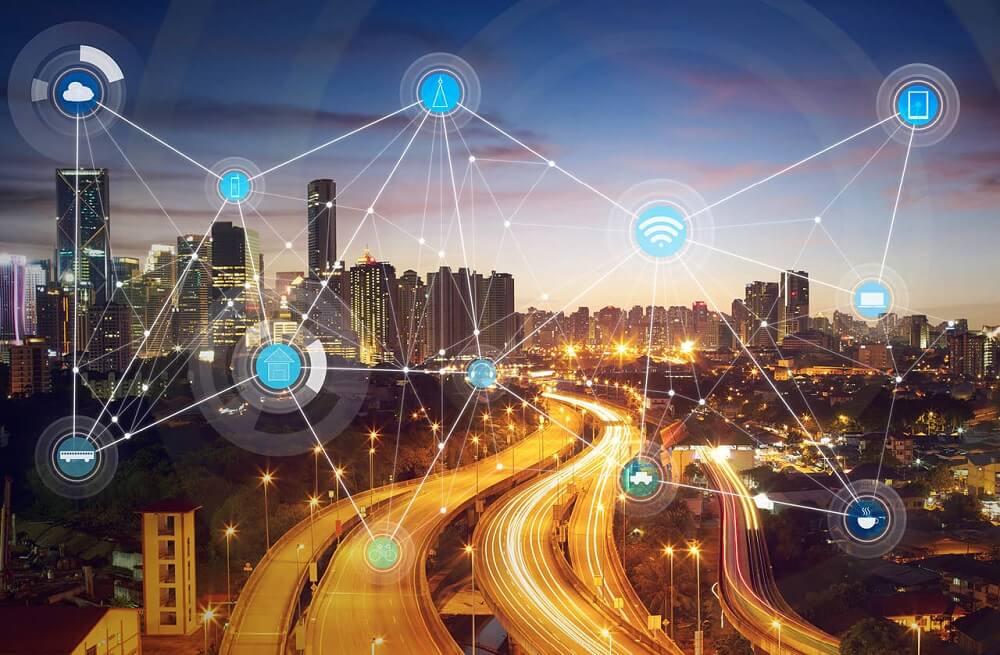
With SCADA, smart city officials can track resource usage. If there's a spike in resource consumption, these officials will find out about it right away. Plus, smart city officials can generate insights that they can use to find ways to optimize their communities' resource usage and minimize their carbon footprint.
Smart Manufacturing
Smart factories feature SCADA system sensors that identify machine issues before they escalate. If a machine is not functioning as expected, these sensors can notify managers, and they can address the issue. That way, the machine can work properly, and workers won't have to worry about utilizing equipment that may be ineffective or unsafe.
Along with this, SCADA systems allow manufacturers to track the output speed of their machines. This can help manufacturers develop and implement maintenance schedules so they can keep their machines working correctly for long periods of time. Manufacturers can also avoid machine issues that lead to production delays and revenue losses.
Benefits of SCADA
- Remote Troubleshooting: SCADA lets users identify and remediate equipment problems from any location, at any time
- Remote Control: With SCADA, users can remotely control equipment.
- Increased Uptime: Users can monitor the performance of their devices before they slow down or crash.
- Reduced Energy Costs: Users can gather and evaluate data to understand their energy costs and find ways to reduce them.
- Process Improvements: SCADA ensures users can analyze and optimize their industrial processes.
- Faster Response: A SCADA system notifies users as soon as an incident happens so they can quickly respond to it.
SCADA Challenges
Security represents the biggest challenge with SCADA systems. Cybercriminals frequently target these systems in the hopes that they can infiltrate them to gain access to critical infrastructure, including: Power plants, Water treatment facilities, Transportation systems.
In addition to security, compatibility and scalability are major challenges with SCADA systems. It is paramount for an organization to find a system that complements its technology stack. If an organization doesn't, it can be expensive and time consuming to get the system to work as expected.
There can be times where organizations don't plan for SCADA system implementation, either. Without proper planning, an organization may struggle to collect the data it wants from its field devices. On top of that, the organization risks SCADA system cyberattacks and data breaches.
